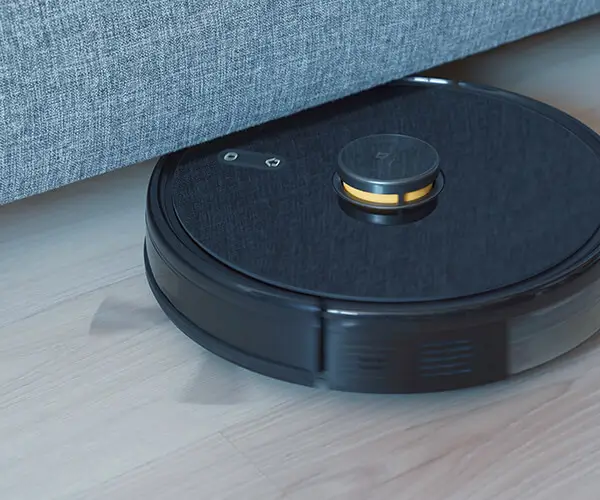The Rise of AC Motors with Servo Control: Transforming Industrial Landscapes
In the fast-evolving world of automation and robotics, the quest for precision, efficiency, and reliability is relentless. At the heart of these advancements lies a technological marvel: the AC motor with servo control. This sophisticated combination stands at the forefront of modern motion control systems, bridging the gap between powerful electric motors and intelligent control algorithms.

Understanding the Basics
AC (Alternating Current) motors have long been the workhorses of industry. Known for their durability, simplicity, and cost-effectiveness, they power everything from conveyor belts to large-scale machinery. Traditionally, AC motors operate at fixed speeds determined by the power supply frequency. However, as industries demanded more precise control and adaptability, engineers sought ways to enhance these reliable machines.
Enter servo control systems. Originally developed for aircraft and aerospace applications, servo technology involves regulating motor position, speed, and torque with exceptional accuracy. When integrated with AC motors, servo controllers enable rapid, precise movements that were once thought impossible with conventional designs.
Why Combine AC Motors and Servo Systems?
The marriage of AC motors with servo control unlocks a host of benefits:
Enhanced Precision: With advanced feedback mechanisms, servo systems continuously monitor and adjust motor operation. This ensures exact positioning, critical in applications like CNC machining, robotic arms, and semiconductor manufacturing. High Dynamic Response: The system can respond swiftly to command changes, allowing for rapid acceleration, deceleration, and smooth transitions. Energy Efficiency: Precise control minimizes unnecessary energy expenditure by delivering only the power needed for each operation. Reduced Maintenance: Modern servo systems analyze operation patterns, identifying issues early and reducing downtime. Flexibility: Adjustable parameters allow manufacturers to tailor performance to specific tasks, from high-speed operations to delicate manipulation.
Types of AC Servo Motors
Not all AC motors are created equal in the realm of servo control. Some of the most common include:
Synchronous AC Servo Motors: These motors operate synchronously with the power supply frequency, offering high efficiency and excellent torque control. They often feature permanent magnets embedded in the rotor. Induction Servo Motors: Based on the traditional squirrel-cage concept, these motors provide robust performance and are easier to maintain, though they may require specialized control algorithms. Brushless DC (BLDC) Motors: Though technically a DC motor, many BLDCs are driven by AC currents via inverter drives, making them popular in servo applications for their high reliability and performance.
The Role of Feedback Devices
Integral to servo control is the feedback mechanism, usually employing encoders or resolvers, which provides real-time data on motor position, velocity, and sometimes torque. This data is fed into a control system—often a sophisticated servo drive or motion controller—which calculates the necessary adjustments.
The control algorithms, such as PID (Proportional-Integral-Derivative), adaptive control, or vector control, process this information to produce response signals that steer the motor precisely. The result is a system that can handle complex, multi-axis movements with smoothness and accuracy.
Technological Breakthroughs Making It Possible
Recent innovations have propelled AC motor with servo control commonplace in industries worldwide:
Inverter Technology: High-frequency inverters generate variable-frequency AC signals, giving unprecedented control over motor speed and torque. Advanced Materials: Use of high-grade magnets and insulation materials improves efficiency and heat dissipation. Integrated Sensors: Miniaturized sensors facilitate more accurate feedback, even in challenging environments. Intelligent Control Software: Machine learning and AI-driven algorithms optimize performance dynamically, predicting maintenance needs and adjusting parameters for peak operation.
Key Applications Revolutionized by AC Servo Motors
The versatility of the AC motor with servo control extends across countless industries. Some highlights include:
Robotics: Precise joint positioning, rapid response times, and adaptable motion patterns. CNC Machinery: Achieving micron-level accuracy in cutting and machining processes. Packaging and Labeling: Fast, reliable handling of delicate or high-speed tasks. Semiconductor Manufacturing: Handling wafers with extreme precision, reducing defects. Automated Warehousing: Smooth, rapid movement of goods and materials.
This synergy of power and intelligence is not just a technological upgrade—it's a strategic advantage. By enabling machines to operate smarter, faster, and more accurately, industries can enhance productivity, quality, and safety.
Leveraging innovations in modular drive technology, Kpower integrates high-performance motors, precision reducers, and multi-protocol control systems to provide efficient and customized smart drive system solutions.




































